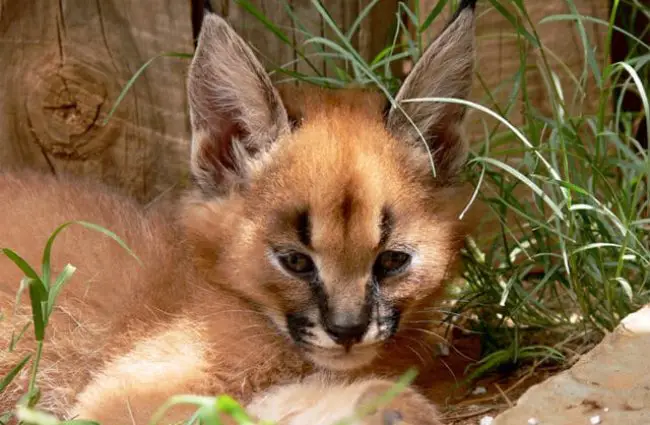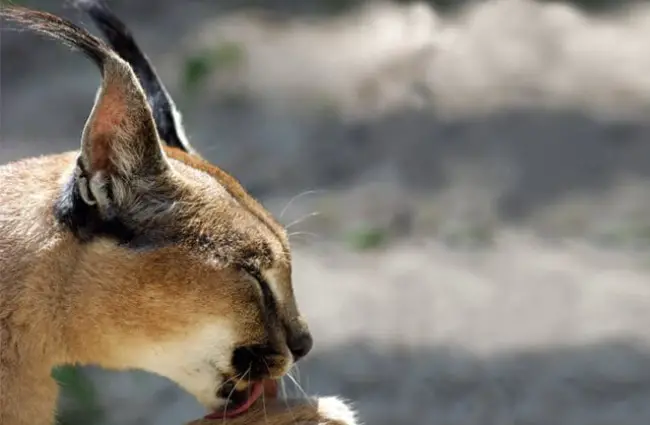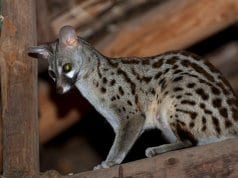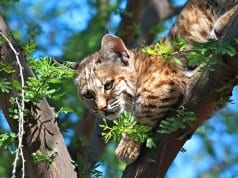The Enigmatic Caracal: A Comprehensive Guide
The caracal, a sleek and striking feline, often evokes images of the African savanna. However, this adaptable predator boasts a surprisingly broad distribution and a fascinating natural history. More than just a beautiful face and distinctive ear tufts, the caracal is a highly skilled hunter and a crucial component of its ecosystem. This guide delves into the world of the caracal, exploring its biology, behavior, habitat, and its interactions with both wildlife and humans.

Basic Information: The Caracal at a Glance
The caracal Caracal caracal, also known as the desert lynx or African lynx, is a medium‑size wild cat native to Africa, the Middle East, Central Asia, and India. It is characterized by its slender build, long legs, a relatively short tail, and, most notably, its prominent black ear tufts. These tufts are believed to aid in communication, perhaps signaling mood or intent to other caracals. Adults typically weigh between 8 and 19 kilograms (18 and 42 pounds) and stand around 40 to 50 centimeters (16 to 20 inches) at the shoulder.
Physical Characteristics
The caracal’s coat is typically tawny or reddish‑brown, although melanistic (black) individuals have been recorded. The underside is lighter, and kittens often have spots that fade as they mature. Their powerful legs and flexible spine contribute to their incredible jumping ability – they can reportedly leap up to 3 meters (10 feet) in the air to snatch birds from flight. This athletic prowess, combined with keen eyesight and hearing, makes them formidable hunters.
Habitat and Distribution: Where Does the Caracal Roam?
Caracals are remarkably adaptable and can thrive in a wide range of habitats. They prefer savanna, woodland, scrub, and dry forest, but can also be found in mountainous, rocky areas and even semi‑desert regions. Their distribution is broad, spanning much of Africa, the Middle East, and extending into parts of Central Asia and India. Historically, they were more widespread, but habitat loss and persecution have led to population declines in some areas.

Geographic Variation
Caracals inhabiting denser forests tend to be darker in color, providing better camouflage. Those in arid regions typically have paler coats. Populations in Central Asia, sometimes referred to as the “caracal lynx,” are generally larger and have thicker fur as an adaptation to colder temperatures.
Diet and Hunting Strategies: A Skilled Predator
The caracal is a carnivore with a varied diet. While small mammals, such as rodents, hares, and hyraxes, constitute the bulk of its prey, they will also hunt birds, reptiles, and occasionally larger mammals like gazelles and young sheep. They are opportunistic hunters, adapting their strategies to the available prey and habitat.
Hunting Techniques
Caracals are primarily solitary hunters. They employ a combination of stalking and ambush tactics. Their excellent jumping ability allows them to pounce on unsuspecting prey. They are also known to dig into burrows to extract rodents. Importantly, they do not rely heavily on scent‑marking territories. They seem to have a broader foraging range than many other felids.
Reproduction and Life Cycle
Caracals are generally solitary animals, except during mating season. Breeding can occur year‑round, although it often peaks during warmer months. The gestation period lasts approximately 69 to 81 days, resulting in a litter of 1 to 6 kittens.
Raising Kittens
Kittens are born in secluded dens, often within rocky outcrops, caves, or dense vegetation. They are initially blind and helpless, relying entirely on their mother for care. The mother will nurse and protect her kittens for several months, gradually introducing them to solid food and teaching them hunting skills. Young caracals typically become independent at around 9 to 10 months old.

Ecological Role and Interactions with Other Animals
As a predator, the caracal plays a vital role in regulating prey populations. By controlling the numbers of rodents and other small mammals, they help to maintain the health and balance of their ecosystem. They also compete with other carnivores, such as jackals and foxes, for resources.
Coexistence and Competition
Caracals will occasionally scavenge from kills made by larger predators like lions and leopards, but they generally avoid direct confrontation. They have also been known to share habitats with baboons, sometimes benefiting from the baboons’ alarm calls warning of approaching danger.
Caracals and Humans: A Complex Relationship
Historically, caracals were used as hunting companions in the Middle East, helping to chase and capture gazelles and other prey. Today, they are often perceived as a threat to livestock, leading to persecution by farmers. Habitat loss and fragmentation also pose significant threats to caracal populations.
Conservation Status
The caracal is currently listed as “Least Concern” by the International Union for Conservation of Nature (IUCN). However, populations are declining in some regions, and they are considered vulnerable in several countries. Conservation efforts focus on protecting their habitat, mitigating human‑wildlife conflict, and raising awareness about the importance of these magnificent cats.
Encountering a Caracal in the Wild
If you are fortunate enough to encounter a caracal in the wild, observe it from a safe distance. Do not approach it or attempt to feed it. Report your sighting to local wildlife authorities. If a caracal appears aggressive, make yourself look large and make noise. Slowly back away and avoid direct eye contact.
For the Aspiring Zoologist: Delving Deeper
Caracal genetics are still being studied, but preliminary research suggests relatively low genetic diversity within some populations, potentially making them vulnerable to disease outbreaks. Behavioral studies have revealed complex social interactions, including scent marking and vocalizations. The function of the ear tufts is still debated, but hypotheses include enhancing hearing, aiding in camouflage, and serving as visual signals during communication.
Captive Care
Zookeepers caring for caracals must provide spacious enclosures with plenty of climbing structures, scratching posts, and hiding places. A varied diet consisting of commercially prepared feline diets supplemented with whole prey items is essential. Enrichment activities, such as puzzle feeders and scent trails, are crucial for stimulating their natural behaviors and preventing boredom. Socialization with other caracals should be carefully managed, as they are generally solitary animals.
Fascinating Facts About Caracals
- Caracals can go for extended periods without drinking water, obtaining moisture from their prey.
- They are incredibly agile and can run at speeds of up to 50 kilometers per hour (31 miles per hour).
- Their powerful legs enable them to make incredible leaps, sometimes reaching heights of over 3 meters.
- Caracals have retractable claws, like most other cats.
- While generally solitary, they have been observed forming temporary pairs during mating season.
The caracal remains an elusive and captivating creature, a testament to the diversity and beauty of the natural world. By understanding its biology, behavior, and ecological role, we can contribute to its conservation and ensure that future generations can marvel at this remarkable feline.






![Red Angus Closeup of a beautiful Red Angus cowPhoto by: U.S. Department of Agriculture [pubic domain]https://creativecommons.org/licenses/by/2.0/](https://animals.net/wp-content/uploads/2020/03/Red-Angus-4-100x75.jpg)

